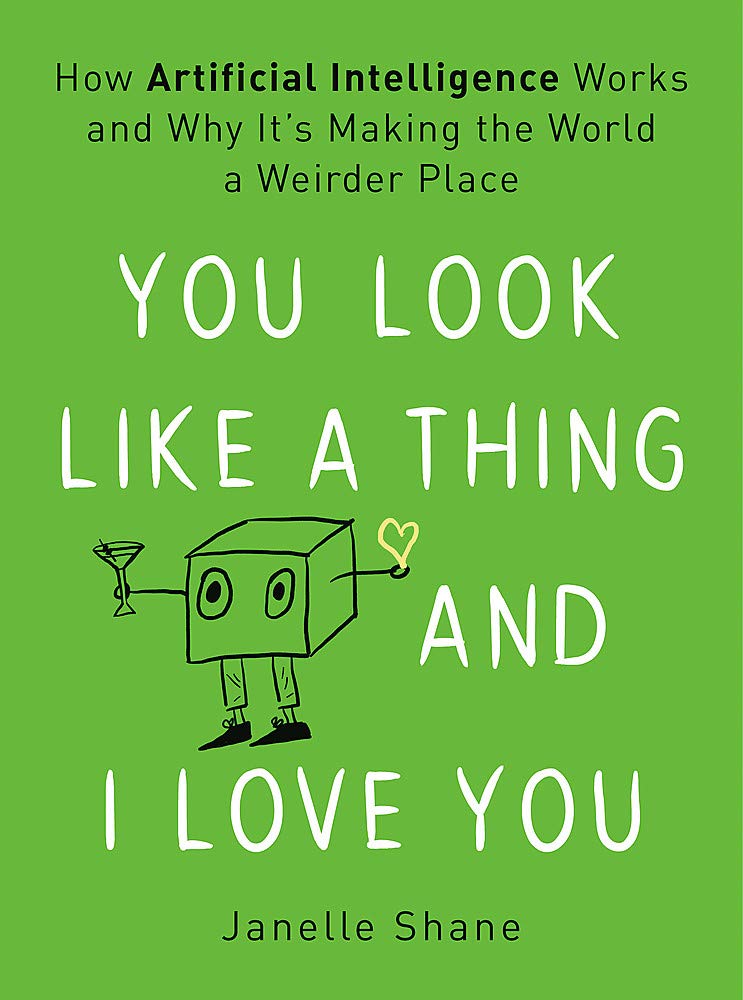If you are signed up for #TheSTEMBookClub email newsletter, the subject line of the email for this month would've been Robots: The mirror image of Artificial Intelligence. I pasted part of this email into this text completion AI tool, and that is what was generated as the subject. Not too bad!
Recently, I downloaded an app that has been a lifesaver. At least a lifesaver for my plants. I take a picture of my plants, and AI in the app not only identifies the plant but also identifies what I am doing that is causing the plant to die. Like WHAT?!? Thanks to AI, for the first time ever I am a successful plant owner. Identifying plants, I think we can all agree, is a rather harmless and great use of AI. (It is also a very simple task which AI is typically good at). If that is where all the uses of AI stopped, then I don't think there would be as many news stories about AI taking over the world or AI amplifying human biases. In last month's book choice - You Look Like a Thing and I Love You, we learned about what AI is good at and what AI is not good at.
If you read the book, I won't bore you with a summary. If you haven't read it, then you might want to consider it and check out the summary here. Rather, I'm going to share supplementary content and resources about Artificial Intelligence that is interesting, wierd, and really rad!
Growing up, a trick (I realize now) that my parents pulled on my younger brother and me, was to have us compete against the other to see who can clean the fastest and most thoroughly. Even though I hated cleaning, I hated losing to my brother more. So this trick always worked. Some programmers behind AI must have been parents because this is the same method used by GANs. GANs (Generative adversarial networks) use this same concept, pitting two AIs against each other to try and beat the other. Brilliant! One AI generates an image, and the other AI tries to determine if it is real or not. Last one standing wins. The results are even more brilliant... check out this website which every time you refresh the page, generates a new GAN-created face... They all look so real 🤯.. (I personally preferred the cat generator website instead).
A major giveaway that an image is AI created is if the person in the image has mismatched earrings or mismatched backgrounds. I'm surprised the GAN AI hasn't figured out to never add earrings to photos.. but that's probably thinking too much like a human and not enough like an AI.
But I mean, how do AI even think? Do AI even think? That is (basically) the first line of the first-ever robot-related literature in the English-language literature, Moxon's Master. It was written in 1899, well before the term robot even existed. It's a short, mind-boggling read, which I highly recommend.
But if you'd rather just look at more images of AI art, Gregory Chatonsky programmed an AI to generate a painting, and another AI to identify the painting. A GAN focused on abstracts. I think my favorite is the painting entitled "Cat Sitting on a Bench". If I squint my eyes, and tilt my head, and spin around 3 times, I can TOTALLY see a white cat in the bottom left corner!
Evolutionary AI is another interesting branch of Artificial Intelligence! Evolutionary AI is the concept of simulating a world and putting AI into that simulation and seeing how the AI evolves to accomplish a goal. The goals can be something like, getting from A to B the fastest or jumping the highest. Then we observe how the AI evolves to accomplish that goal. Maybe the AI will evolve legs and figure out how to walk, maybe the AI will evolve to swim through the air, or maybe the AI will just evolve to grow really tall and then fall over to reach point B. The options are endless.
Observing how AI evolves is a growing area of research that is helping us understand how real species on Earth evolved. But figuring out why humans evolved to have a curved spine, wisdom teeth, and opposable thumbs is a pretty big question, and a very hard simulation to create. However, watching videos like this one and seeing how AI learned to play hide and seek (and even figured out how to hack their own simulation), makes me optimistic that we can get some answers from Evolutionary AI.
Artificial Intelligence is really changing the way we do basically everything. It is predicted that the market size of AI (in the US) will grow to $15 trillion by 2030. Not bad for an industry that is only recently being realized.
While AI is very powerful and is changing the way we do so many things, there are some major limitations. This month we learned about those limitations, where AI is very successful (picking out a movie you will binge watch), and where AI is not currently successful (fully autonomous self-driving vehicles)! I hope you had fun learning about AI this past month! June is all about GAMES. We will be doing a deep dive into the history, math, and future of games and gamification of our lives. Follow along on Instagram, join our Discord server, or just check out the website where Game content will be posted at the end of the month! Happy Reading, -JoCee
P.S. If you made it this far and want to get these newsletters in your email monthly, feel free to join #theSTEMBookClub here.

